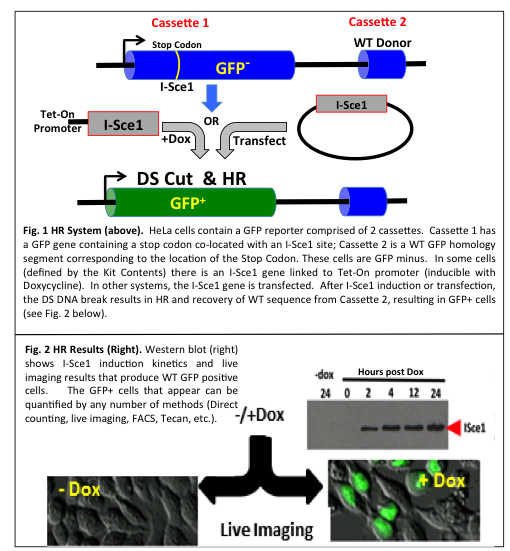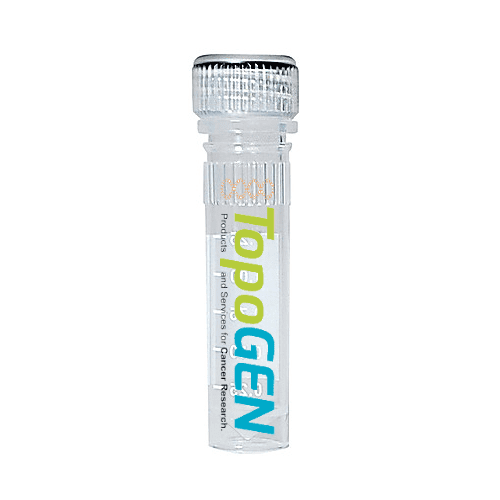Academic pricing is shown. For-profit institutions should contact TopoGEN directly for a quote.
A Kit to Stably Engineer the Homologous Repair (HR) Reporter System in Any Cell Line
DNA Repair pathways in animal cells can be divided into two main categories: HR and NHEJ. HR or homologous recombination is a minor pathway but very important in protecting cells from genotoxicity. The process has two key requirements as well: a homologous sequence, usually available after DNA replication when the genome is 4N, and S-phase. A specific reporter based assay for HR can be very beneficial for anti-cancer drug discovery projects, learning more about the process of DNA HR repair and establishing intersecting pathways and druggable pathway targets. A cellular context for HR improves the physiological relevance of the results.
This kit contains reagents necessary to create a complete HR reporter system in any animal cell line. It includes an HR-GFP reporter with a selectable marker and a DS DNA cleavage nuclease to initiate HR. Because GFP is a neutral gene reporter and not subject to selection, the HR process can easily be examined and assayed by assessing the %GFP or GFP intensity in a population of cells. The system is mobile in that it can be incorporated in any cell lineage or species to adapt to the investigators system of study.
This cell based/cell context system has been designed to allow researchers to interrogate the HR process in live cells in vivo. This Custom HR Kit is based on a twin GFP cassette that converts from GFP negative to GFP positive cells using homologous recombination (HR). DNA repair via HR (as gene conversion) will result, since a wild type (homologous) GFP segment is present in close proximity to the DNA break. To introduce a precise DNA cleavage, a mega-endonuclease (I-Sce1) introduces a DS break in the GFP locus of Cassette 1 (Fig. 1). The human genome contains no I-Sce1 sites; therefore, an I-Sce1 site in Cassette 1 means that the DS break occurs only at this precise location and not elsewhere. The DS break initiates HR and using the WT sequence as a homology template (located in Cassette 2) the gene converts to WT and GFP positive cells appear (Fig. 2). HR is triggered by a DS break which is achieved by activating an expression plasmid for I-Sce1 (Fig. 2).
In summary, this kit will allow you to study and analyze HR in a specific cell lineage or cell line using a neutral GFP gene reporter.
This technology lends itself to live cell imaging (by tracking single GFP+ cells). Live imaging gives essentially single cell resolution to HR analysis in these cells. In addition, the descendants of DNA repair can be tracked, since these cells are also GFP positive.


